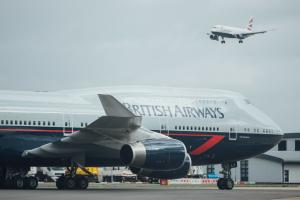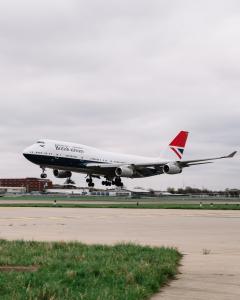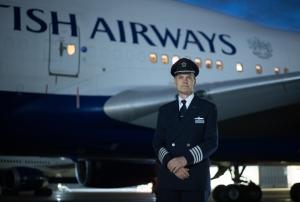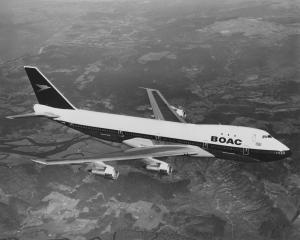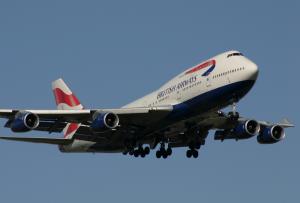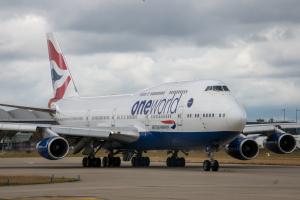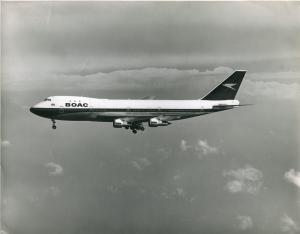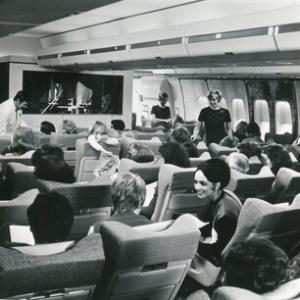To commemorate the occasion the airline's two aircraft took to the skies at just after 07:47am one after the other from runway 27R at the London hub. Once in the air, tail number 'G-CIVY' circled back over the southerly runway in an emotional farewell to its home before heading to St Athan where the aircraft will be retired. Sistership 'G-CIVB', painted in the airline's historic Negus livery headed to Kemble.
This poignant time was due to come later in the decade, but the collapse in travel demand and restrictions remaining on international travel has meant the departure has come much quicker than planned. It was in Jul-2020 that British Airways announced that its remaining 747s had sadly flown their last commercial services as a result of the impact the Covid-19 pandemic has had on the airline and the aviation sector. The fleet is being replaced by quieter more fuel efficient aircraft as part of the airline's commitment to achieving net zero carbon emissions by 2050.
It was British Airways' predecessor BOAC that first introduced the 747 into service on 14-Apr-1971 and the airline welcomed its 747-400 fleet between Jul-1989 and Apr-1999, at its height operating 57 aircraft and being the world's biggest operator of the variant.
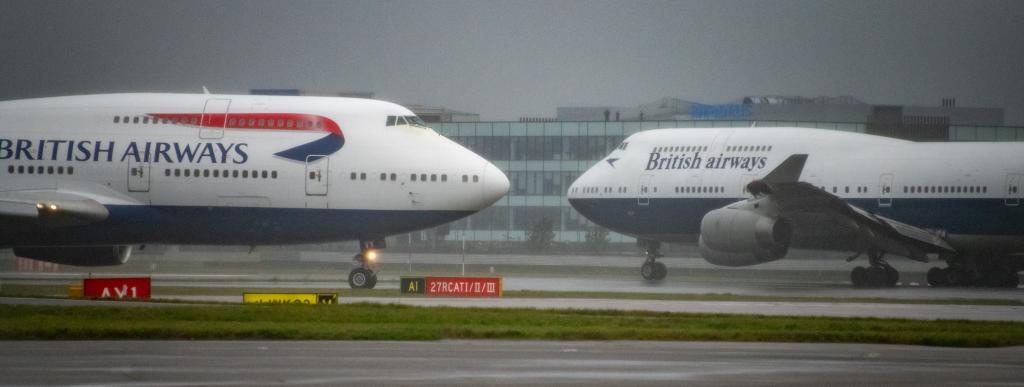
They say 'a picture paints a thousand words'. In this new regular section Corporate Travel Community (CTC) offers a graphical insight into a key industry observation or trend. In this third edition we use OAG data to highlight British Airways' operation of the 747 over the past decade and how the global level of 747 flights have reduced over the same timescale.
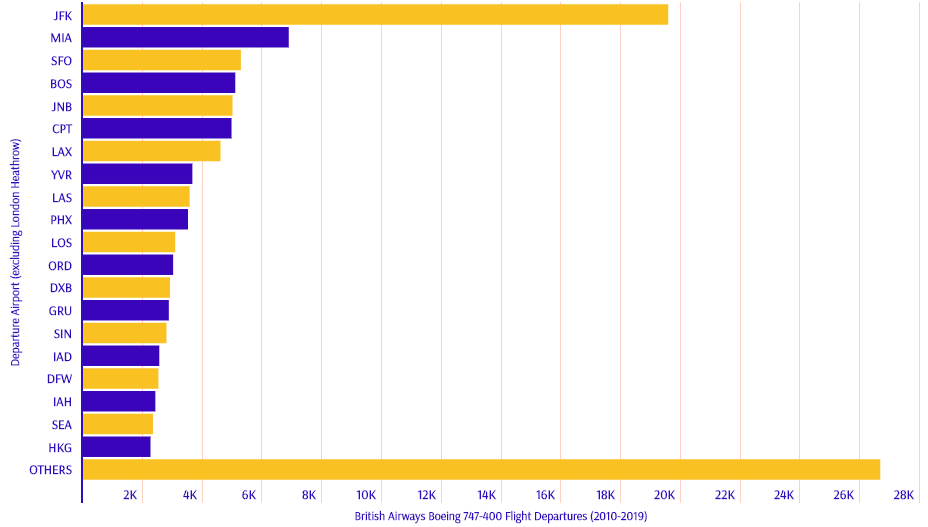
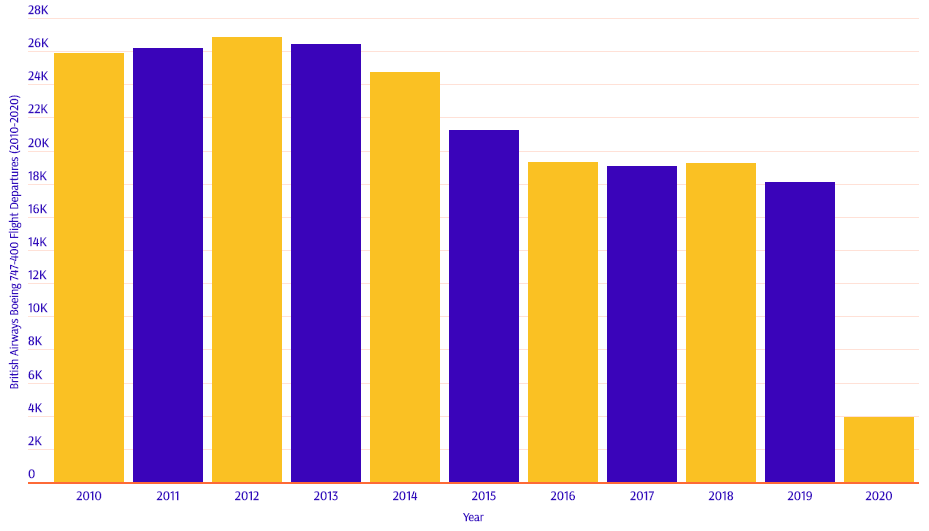

EDITOR'S COMMENT: A family holiday in Orlando last year had seen us looking at various flight options from and to the UK, but at the request of my son we selected an itinerary to return back to the UK via Miami as he wanted to fly on the "double-decker aeroplane". British Airways operated two daily flights on MIA-LHR at the time and it pained me to have to select the A380 departure rather than the 747 service. Like many in the industry I've always had an admiration for the 'Queen of the Skies' and having worked adjacent to Heathrow's northern runway and lived on the airport's flightpath I spent many a day in my younger years watching the graceful beauty depart and land. As it happened BA moved the A380 to its Washington route and we ended up flying home on a 747. The interior may have been a little tired and my son a little disappointed, but I am so glad that my family had the chance to fly on one of the most famous commercial airliners ever built and I had another chance to fly on the legendary Jumbo Jet.
